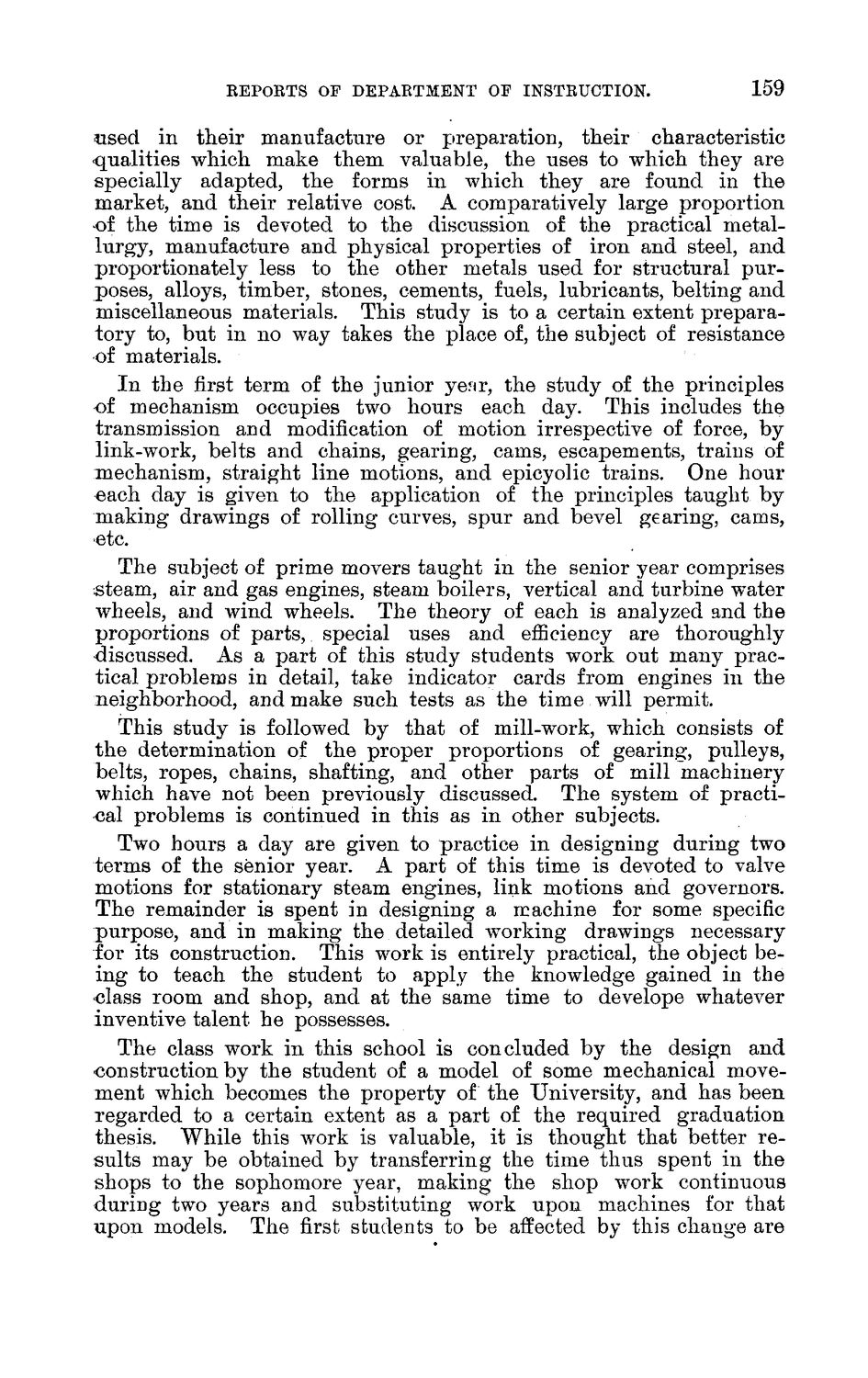| |
| |
Caption: Board of Trustees Minutes - 1888
This is a reduced-resolution page image for fast online browsing.

EXTRACTED TEXT FROM PAGE:
REPORTS OF DEPARTMENT OF INSTRUCTION. 159 cised in their manufacture or preparation, their characteristic qualities which make them valuable, the uses to which they are specially adapted, the forms in which they are found in the market, and their relative cost. A comparatively large proportion of the time is devoted to the discussion of the practical metallurgy, manufacture and physical properties of iron and steel, and proportionately less to the other metals used for structural purposes, alloys, timber, stones, cements, fuels, lubricants, belting and miscellaneous materials. This study is to a certain extent preparatory to, but in no way takes the place of, the subject of resistance of materials. I n the first term of the junior yenr, the study of the principles of mechanism occupies two hours each day. This includes the transmission and modification of motion irrespective of force, by link-work, belts and chains, gearing, cams, escapements, trains of mechanism, straight line motions, and epicyolic trains. One hour each day is given to the application of the principles taught by making drawings of rolling curves, spur and bevel gearing, cams, etc. The subject of prime movers taught in the senior year comprises steam, air and gas engines, steam boilers, vertical and turbine water wheels, and wind wheels. The theory of each is analyzed and the proportions of parts, special uses and efficiency are thoroughly discussed. As a part of this study students work out many practical problems in detail, take indicator cards from engines in the neighborhood, and make such tests as the time will permit. This study is followed by that of mill-work, which consists of the determination of the proper proportions of gearing, pulleys, belts, ropes, chains, shafting, and other parts of mill machinery which have not been previously discussed. The system of practical problems is continued in this as in other subjects. Two hours a day are given to practice in designing during two terms of the senior year. A part of this time is devoted to valve motions for stationary steam engines, link motions and governors. The remainder is spent in designing a machine for some specific purpose, and in making the detailed working drawings necessary for its construction. This work is entirely practical, the object being to teach the student to apply the knowledge gained in the class room and shop, and at the same time to develope whatever inventive talent he possesses. The class work in this school is concluded by the design and construction by the student of a model of some mechanical movement which becomes the property of the University, and has been regarded to a certain extent as a part of the required graduation thesis. "While this work is valuable, it is thought that better results may be obtained by transferring the time thus spent in the shops to the sophomore year, making the shop work continuous during two years and substituting work upon machines for that upon models. The first students to be affected by this change are
| |